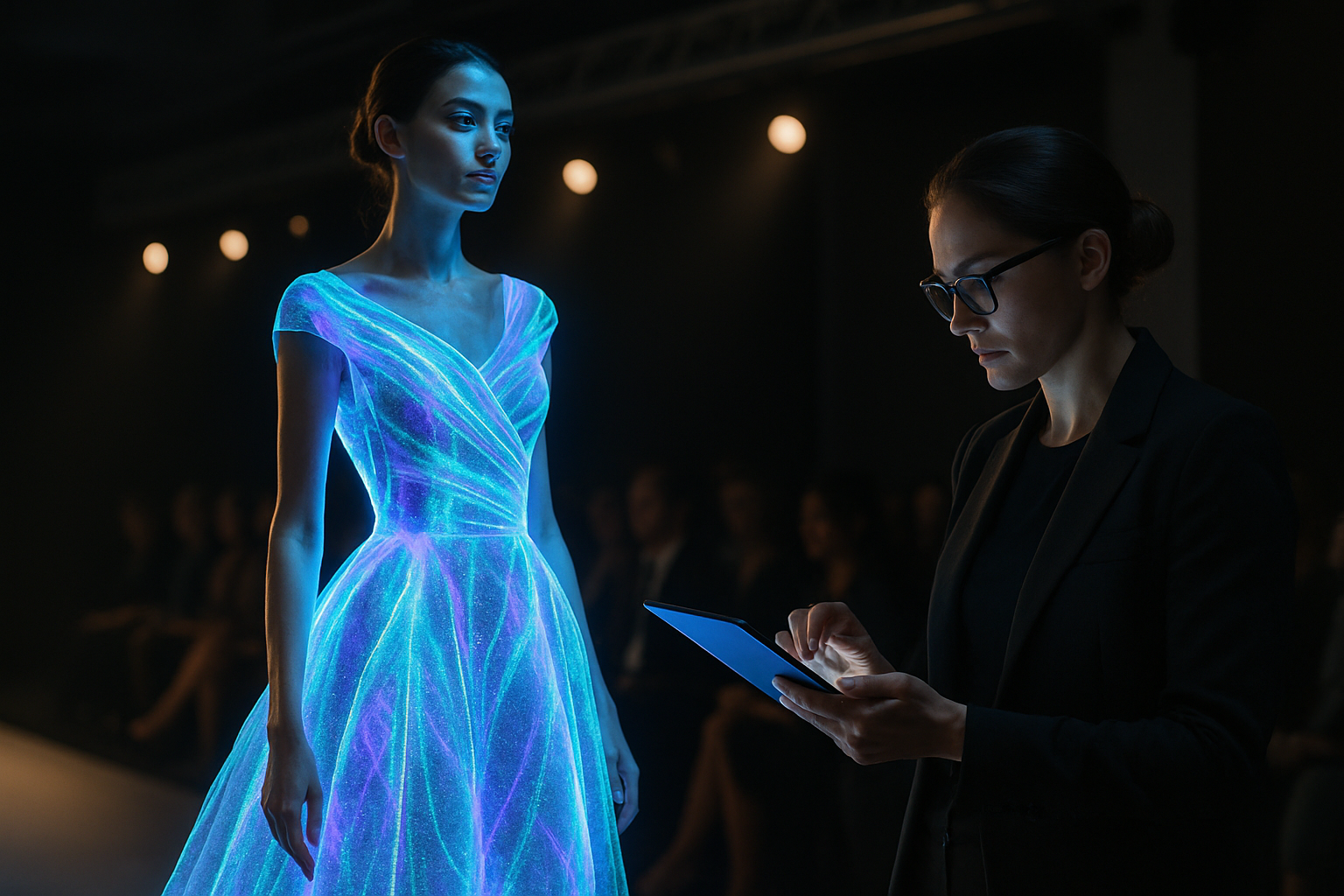Holographic Fashion: The Future of Runway Shows
In a world where technology and creativity collide, holographic fashion is emerging as a groundbreaking frontier in the fashion industry. This innovative approach to showcasing clothing and accessories is revolutionizing runway shows, blending the physical and digital realms in ways previously confined to science fiction. As designers and tech experts collaborate to push the boundaries of fashion presentation, holographic runways are captivating audiences and redefining the very essence of haute couture events.

Technological Marvels Behind the Scenes
At the heart of holographic fashion shows lies a complex network of cutting-edge technologies. High-powered projectors, motion capture systems, and advanced computer graphics work in tandem to create lifelike, three-dimensional images of models and garments. These virtual representations can be manipulated in real-time, allowing designers to showcase their creations in ways that were previously impossible.
The Holographic Runway Experience
Attending a holographic fashion show is a sensory journey unlike any other. As the lights dim, spectators find themselves transported into a realm where reality and illusion intertwine. Virtual models strut down invisible catwalks, their holographic forms shimmering and morphing to showcase different outfits in rapid succession. The absence of physical constraints allows for dramatic transformations, with garments seamlessly transitioning from one style to another in the blink of an eye.
Sustainability and Accessibility in Fashion
One of the most significant advantages of holographic fashion shows is their potential to reduce the environmental impact of the fashion industry. By eliminating the need for physical samples and reducing travel requirements for models and staff, these virtual events offer a more sustainable alternative to traditional runway shows. Additionally, holographic presentations can be broadcast globally, allowing fashion enthusiasts from around the world to experience high-end fashion events without the need for costly travel or exclusive invitations.
Challenges and Criticisms
Despite its potential, holographic fashion faces several hurdles on its path to widespread adoption. Critics argue that the technology cannot fully replicate the tactile experience of seeing and touching physical garments. There are also concerns about the loss of jobs for models and other fashion industry professionals. Furthermore, the high costs associated with implementing holographic technology may limit its accessibility to smaller designers and brands.
The Future of Fashion Presentation
As holographic technology continues to evolve, its integration into the fashion world is expected to deepen. Industry experts predict a future where holographic showrooms allow customers to virtually try on clothes from the comfort of their homes. Some visionaries even speculate about the possibility of wearable holographic garments, blurring the lines between physical and digital fashion even further.
Collaborations Across Industries
The rise of holographic fashion has sparked unprecedented collaborations between fashion designers, tech companies, and entertainment industry professionals. These partnerships are driving innovation in fields such as augmented reality, artificial intelligence, and wearable technology. As these collaborations flourish, the boundaries between fashion, technology, and art continue to blur, giving rise to new forms of creative expression.
Impact on Fashion Education
The emergence of holographic fashion is also transforming fashion education. Design schools are incorporating holographic technology into their curricula, preparing students for a future where digital and physical design skills are equally valuable. This shift is fostering a new generation of designers who are as comfortable with coding and 3D modeling as they are with fabric and thread.
Ethical Considerations in Virtual Fashion
As holographic fashion gains prominence, it raises important ethical questions about body image, diversity, and representation. The ability to create idealized virtual models sparks debates about unrealistic beauty standards and the potential erasure of diverse body types. Industry leaders are grappling with how to ensure that holographic fashion shows remain inclusive and reflective of real-world diversity.
A New Era in Fashion
Holographic fashion stands at the forefront of a technological revolution in the fashion industry. As it continues to evolve, it promises to reshape not only how we view and consume fashion but also how we conceptualize clothing and self-expression in an increasingly digital world. While challenges remain, the potential for innovation, sustainability, and global accessibility makes holographic fashion a compelling glimpse into the future of style and design.





